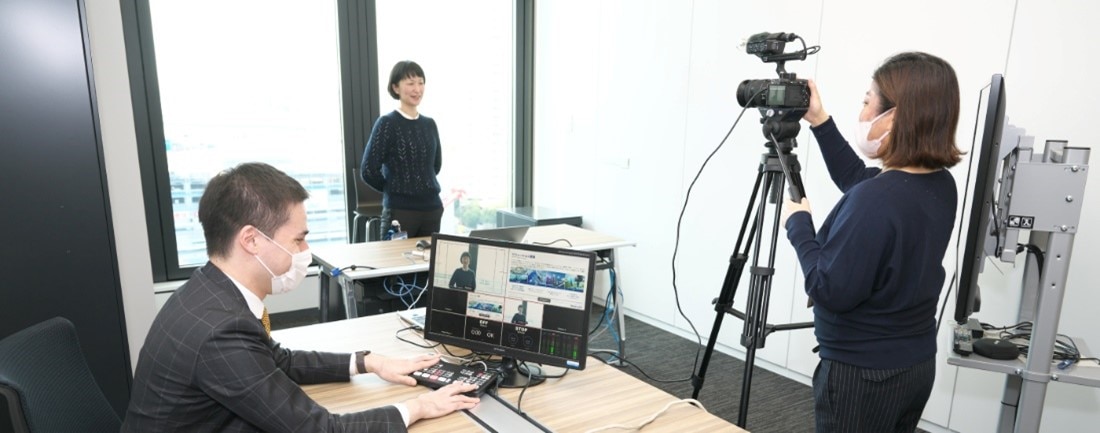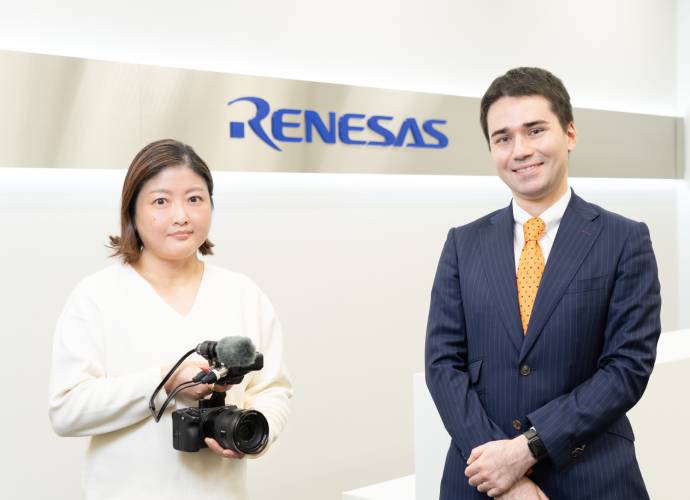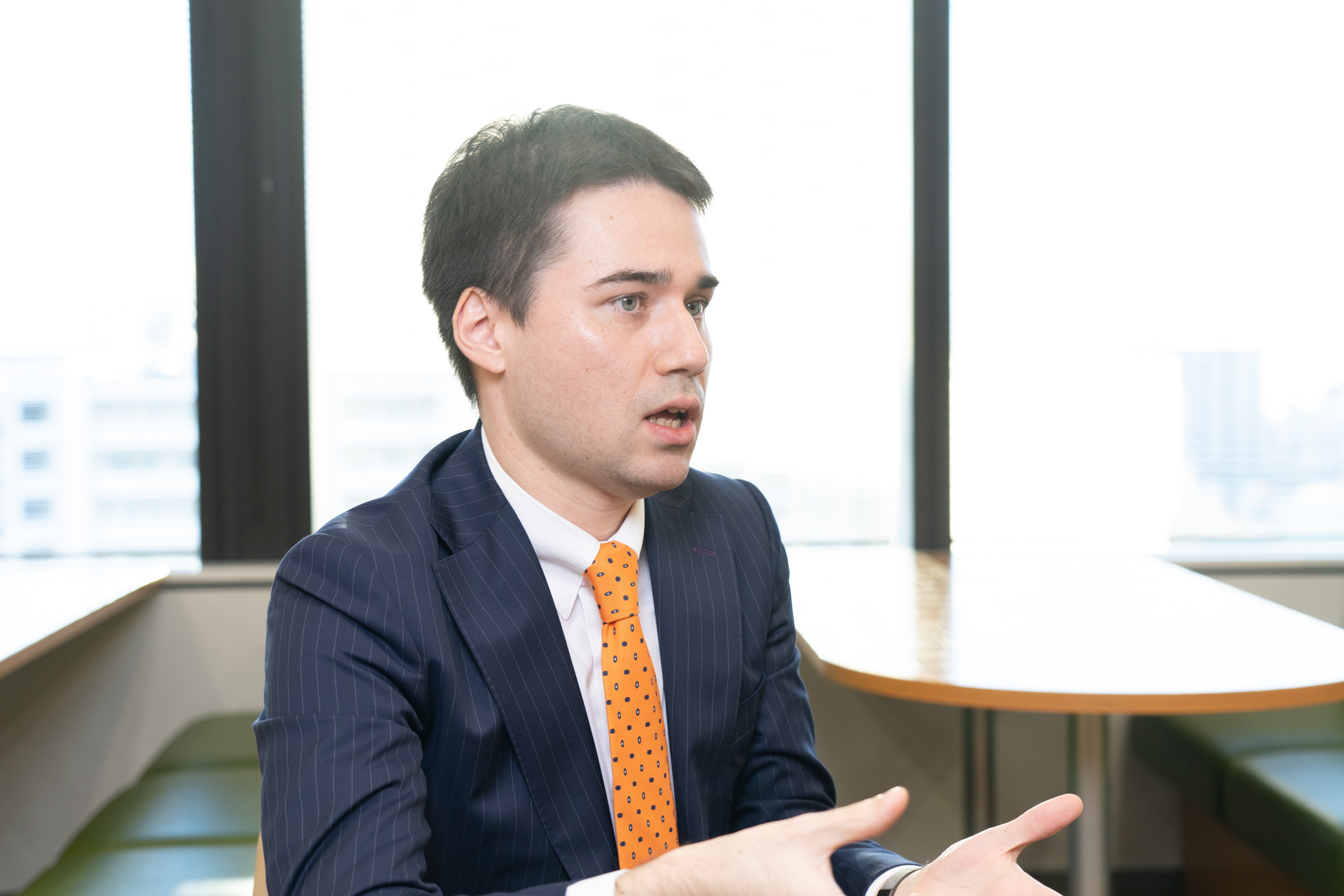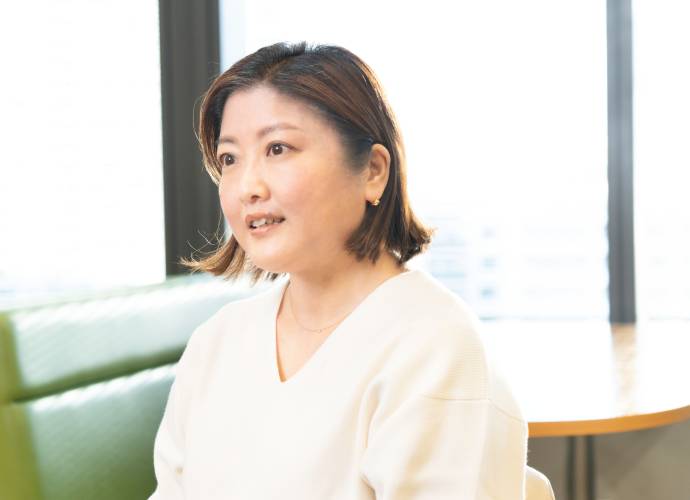
Sony’s Cinema Line camera FX3 helps Renesas Electronics Corporation enhance internal engagement and promote external communication
(The article and images are based on interviews conducted in December 2022).
Renesas Electronics Corporation, known as one of Japan’s leading semiconductor manufacturers, introduced Sony’s Cinema Line camera FX3 in the summer 2022. The Corporate Communications Office, responsible for their Public Relations, has adopted the FX3 with the aim of improving the quality of internal communications. We spoke with Ms. Miyuki Hayashi and Mr. Isamu Yamada to understand why they chose the FX3 and how they use it.

- Improve the quality of internal communications as the company adapts to online-only events

- Introduce the FX3 for crucial presentations such as the semi-annual kick-off meeting instead of outsourcing video production

- Saved time and cost
- Compact, easy-to-operate and portable camera with higher image quality
What were your reasons for introducing the FX3?
Yamada: Our Corporate Communications Office is essentially the ‘Public Relations’ department. Our tasks extend beyond external PR, involving activities such as issuing press releases and engaging with the media, to internal communication, including delivering messages to employees. This emphasis on internal communication stems from the increasing ratio of overseas employees due to acquisitions and the growing number of experienced hires in Japan. The President and CEO, Hidetoshi Shibata, prioritizes internal communication to keep the employees aligned.


Hayashi: We currently use the FX3 for live streaming of internal communication events, such as the CEO’s presentation at the semi-annual kick-off meeting. While we had been using off-the-shelf video cameras for streaming before, the shift to online-only events during the pandemic highlighted the need for a setup that could present the speakers’ expressions more realistically to attract viewers’ attention. Additionally, since the Covid-19 pandemic, there has been an increased demand for message videos internally and externally.
However, outsourcing video production can be costly and time consuming. Therefore, aligning with the CEO’s preference for an in-house, efficient, and agile approach, we contemplated how to effectively implement live streaming and video recording. This consideration led to the decision to introduce a high-performance camera, the FX3, for in-house operations.
Could you elaborate on the process of selecting the filming equipment?
Hayashi: Initially, our Corporate Communications Office lacked in-house expertise in using video equipment to create content. We were navigating in the dark, learning the basics of equipment selection and filming through videos. Fortunately, we had the opportunity to participate in Sony’s webinar, which provided guidance on building an office studio and managing video shooting and streaming independently. This instruction enabled us to create an environment where any employee could confidently shoot videos in the office. Following a visit to the office studio of the webinar host, we selected the equipment, taking inspiration from their setup.
Why did you choose the Cinema Line camera FX3 over other available cameras?
Hayashi: For our current purposes, we opted for a mirrorless interchangeable-lens camera instead of a professional video camera. Since none of us, including myself, are video production experts, we aimed to avoid cameras with numerous buttons and functionalities that might be challenging to understand.
The primary reason for choosing the FX3 was its specialization in video shooting among digital mirrorless cameras. Its compact size, portability, built-in cooling fan for stable long-duration shooting, and other features essential for our purposes were all appealing. Additionally, I appreciate the inclusion of tally lamps on both the front and rear sides, indicating the shooting status.

What other equipment did you introduce concurrently?
Hayashi: We chose the versatile FE 24-105mm F4 G OSS lens. Additionally, we introduced a stereo microphone, ECM-MS2, which can be connected to the XLR terminal of the FX3 handle, a wireless pin microphone for executive discussions, and a large tripod and switcher for stable camera mounting.

After the introduction of the Cinema Line camera FX3 in June 2022, how was it utilized in practice?
Hayashi: In early July, we used it to live stream the second-half kick off event held at the Musashi site (Kodaira City, Tokyo) to various domestic locations.
Yamada: In the new year, we plan to live stream the CEO’s New Year presentation. For domestic locations, it will be from the Takasaki site (Takasaki City, Gunma Prefecture) in a hybrid format. For overseas, it will be the streaming from the Toyosu headquarters (Koto-ku, Tokyo). We have also recorded numerous video messages for events such as anniversary celebrations at overseas locations and for external partners and customers, where executives cannot physically attend.
Can you provide your insights on using it in practical scenarios?
Hayashi: The image quality has significantly improved. Since I am also involved in designing presentation materials and graphic creation for work, I value the high visual quality when making presentations. I felt that the videos shot with the FX3 had a different level of persuasiveness. The CEO’s personality comes across even in online settings, and his real presence is conveyed, which is truly impressive.
Yamada: The feedback from streaming with the FX3 was very positive, with many comments like “It was fun to watch” and “The video was dynamic, and we look forward to the next one.” I was surprised at how much the reaction changed with the enhanced quality of the video.
Hayashi: Indeed, that’s the beauty of the Cinema Line. It also motivated me to film more.

Do you have any additional insights you’d like to share?
Hayashi: Setting up is incredibly easy, and while we adjust exposure and white balance to the shooting environment, everything else is taken care of by the camera, resulting in beautifully shot footage. Once, during a live stream, I suddenly changed the camera angle, and the focus was not where I wanted it to be. Without thinking, I touched the monitor and promptly adjusted the focus using touch tracking.
Yamada: Also, during the CEO’s presentations, he often moves rather than remaining stationary. I found the high-performance real-time tracking autofocus to be a very useful function.
Hayashi: The lens is user-friendly and it’s easy to adjust the zoom and angles during the live stream even when the presenter is moving. The audio has also become significantly clearer. We used to rely on a separate voice recorder in addition to the camera’s audio, but connecting the microphone to the XLR handle unit now enables clear recording, which is impressive.
Yamada: Furthermore, with the background being beautifully blurred, the presenter stands out, a feature unique to the 35mm full-frame sensor.
Hayashi: I am also impressed by the ability to create impressive footage with a blurred background. Since we are not video production professionals, it’s truly appreciated that we can achieve high-quality filming even without extensive camera knowledge.

What are your future plans for utilising ILME-FX3?
Hayashi: Currently, we primarily use the equipment for the Corporate Communications Office’s tasks. However, we are considering creating manuals to make it available it to other business units. For instance, our Automotive Solution Business Unit could benefit from showcasing the actual operation of the demo car in a professionally shot in-house video for events and promotions. We also anticipate receiving feedback on the filming expertise developed in such scenarios and applying it to our tasks.
Yamada: In our tasks, we anticipate a further increase in face-to-face events in the coming fiscal year. Simultaneously, we foresee more opportunities for hybrid events, combining in-person attendance with live streaming. We aim to enhance our videos experimenting with different angles and incorporating multiple cameras for a more engaging visual experience.